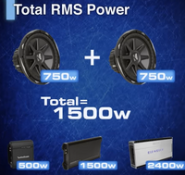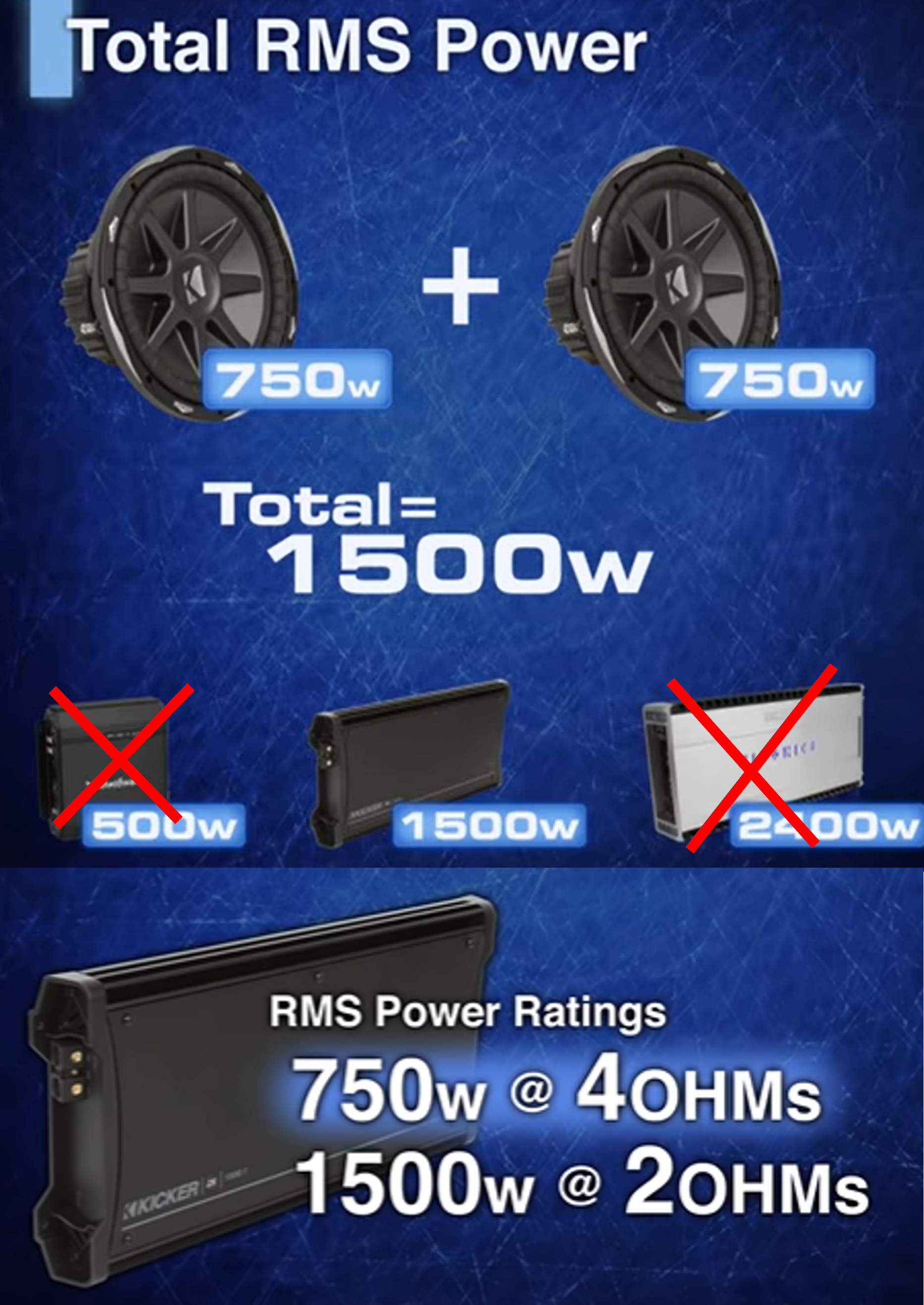Which amplifier to choose for a car subwoofer?

Adding an amplifier to your car not only makes your sound system louder, but also increases the detail and quality of your music, bringing out the speakers' full potential. If you're considering enhancing your car audio experience with an amplifier, here are a few things to consider when shopping for the right fit.
1. Amplifier compatibility with your car stereo
In most cases, you can add an amplifier to your factory stereo, even though it doesn't have preamp outputs to feed the audio signal to the amplifier. Many amps include "speaker level inputs" that allow you to connect the amp to your car's existing speaker wires and receive a signal. Many amps also have a DSP (Digital Signal Processor) to improve the factory sound.
2. RMS power
The main thing we recommend you focus on when buying a car amplifier is the RMS power. The RMS rating tells you the amplifier's maximum constant output power without distortion. It is best to ignore PEAK (max watts) ratings as they are usually inaccurate and mostly marketing. If you already have speakers, check the RMS rating of the speakers, then choose the amplifier with the highest RMS output per channel (not higher than the RMS rating of each speaker). Buying new speakers to pair with your amp? Choose speakers with an RMS rating equal to or greater than the upper RMS output of each amplifier channel. If you have several pairs of speakers with different RMS power and only one amplifier, simply match the output of the amplifier to the lower RMS value.

3. Channel to speaker ratio
You need one amp channel for each speaker you want to power, but amps offer flexibility depending on what configuration you need for your setup. For example: A 4-channel amplifier could drive two speakers and a subwoofer connected to a bridged channel, combining the two channels into one more powerful channel. If you plan to pair with four speakers and one or two subwoofers, a 5-channel amplifier would be ideal.
4. Subwoofer power
A subwoofer is essentially a large speaker that produces bass. For this reason, the same rules apply when calculating RMS power. We recommend that the amplifier's peak RMS power be equal to or slightly less than the sub-RMS power. Multiple sub-amps connected to a single amp will affect its resistance to electrical current, so make sure the sub-amp has the required resistance rating ( Ohm Ω ).



 The data shown here, especially the complete database of car spare parts, may not be copied. It is strictly prohibited to duplicate the data and database and distribute the same, and/or instruct third parties to engage in such activities, without prior consent from TecAlliance. Any use of content in a manner not expressly authorized constitutes copyright infringement and violators will be prosecuted.
The data shown here, especially the complete database of car spare parts, may not be copied. It is strictly prohibited to duplicate the data and database and distribute the same, and/or instruct third parties to engage in such activities, without prior consent from TecAlliance. Any use of content in a manner not expressly authorized constitutes copyright infringement and violators will be prosecuted.